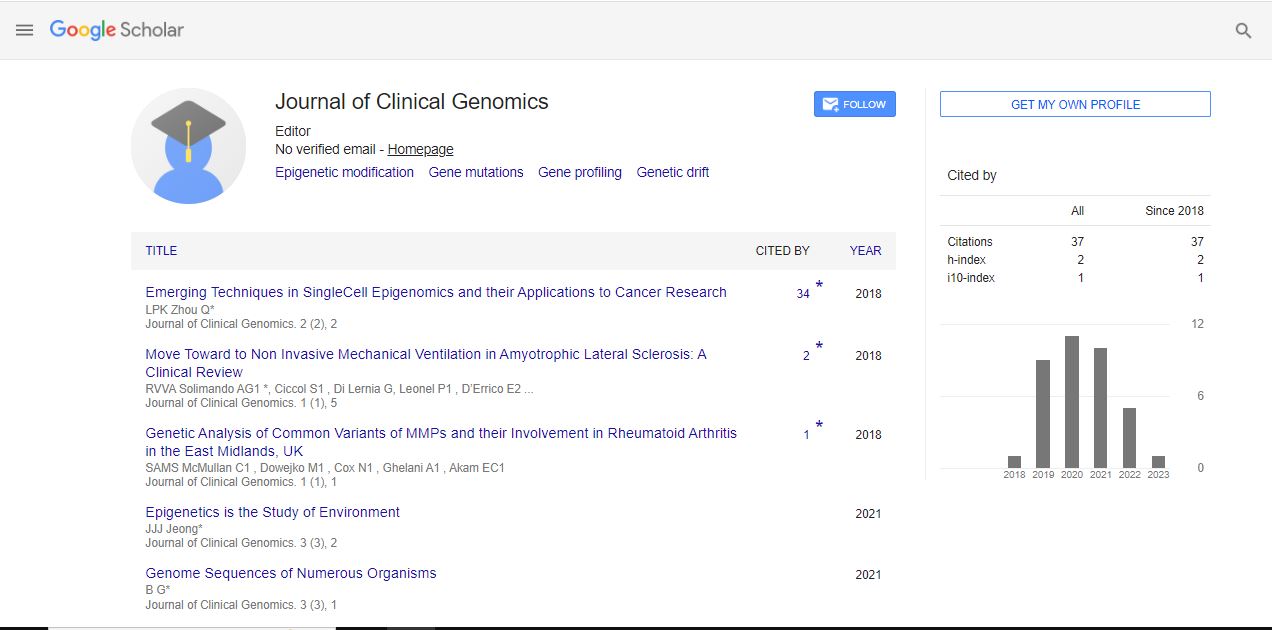Commentary, J Chromatography Res Vol: 6 Issue: 1
Benefits of Ion-Exchange Chromatography for Industrial Bioprocessing
Richard Laven*
1Department of Pharmacy, Massey University, Palmerston North, New Zealand
*Corresponding Author: Richard Laven
Department of Pharmacy, Massey
University, Palmerston North, New Zealand
E-mail: laven@njau.edu.nz
Received date: 15 February, 2023, Manuscript No. JCGR-23-95900;
Editor assigned date: 20 February, 2023, PreQC No. JCGR-23-95900 (PQ);
Reviewed date: 10 March, 2023, QC No. JCGR-23-95900;
Revised date: 28 March, 2022, Manuscript No JCGR-23-95900 (R);
Published date: 07 April, 2023, DOI: 10.4172/jcgr.1000048.
Citation: Laven R (2023) Benefits of Ion-Exchange Chromatography for Industrial Bioprocessing. J Chromatography Res 6:1.
Keywords: Industrial Bioprocessing
Description
Ion-exchange chromatography has high selectivity and specificity for separating charged molecules with different charges, sizes, shapes and hydrophobicities. The selectivity is controlled by the nature and degree of ionization of the resin, the pH and ionic strength of the buffer solution, and the concentration and nature of competing ions. This makes it an ideal technique for separating complex mixtures of proteins, such as those found in cell lysates, fermentation broths, or blood plasma. It can achieve high resolution and purity of target molecules due to its ability to separate molecules based on subtle differences in their charge and hydrophobicity. It can also remove impurities, such as host cell proteins, DNA, RNA, endotoxins, and viruses, which can affect the safety, efficacy, and stability of the final product. This is important for the production of biopharmaceuticals, vaccines, and diagnostic reagents, which require high purity and potency.
It is a scalable and reproducible technique, which can be used for small-scale research or large-scale industrial production. The resin and buffer conditions can be optimized for each specific application to achieve the desired separation and purification performance. The process parameters can also be monitored and controlled to ensure consistent product quality and yield. Ion-exchange chromatography is a versatile and compatible technique, which can be integrated with other chromatographic or non-chromatographic steps to form a complete purification process. It can also be used with a wide range of sample matrices, such as mammalian, bacterial, fungal, or plant cells, without the need for extensive sample preparation or modification. This makes it a valuable tool for a variety of applications, including biologics, industrial enzymes, food additives, and biofuels. Ionexchange chromatography columns have a limited capacity for binding biomolecules, which can limit the amount of product that can be purified in a single run. This can be a significant limitation for large-scale industrial bioprocessing.
It relies on charge-based interactions between the stationary phase and the biomolecules being purified. This means that it may not be suitable for purifying biomolecules that have similar charges, making it less specific than other chromatography techniques. It requires the use of high salt concentrations to elute bound biomolecules. This can be problematic for downstream processing, as the presence of high salt concentrations can interfere with subsequent steps, such as refolding and formulation. The binding of biomolecules to the ion-exchange resin is pH-dependent. This means that the pH of the buffer used for the purification must be carefully controlled, which can add complexity to the process. The ion-exchange resin can be prone to ligand leakage, which can result in contamination of the purified product. This is particularly problematic for applications where purity is important, such as in the production of therapeutics. The resin used in this type of chromatography can become fouled over time, reducing its effectiveness and requiring replacement. This can add to the cost and complexity of the purification process. These chromatography columns have a limited capacity for binding biomolecules, which can limit the amount of product that can be purified in a single run. This can be a significant limitation for large-scale industrial bioprocessing. Ionexchange chromatography requires the use of high salt concentrations to elute bound biomolecules. This can be problematic for downstream processing, as the presence of high salt concentrations can interfere with subsequent steps, such as refolding and formulation. This can result in contamination of the purified product.
 Spanish
Spanish  Chinese
Chinese  Russian
Russian  German
German  French
French  Japanese
Japanese  Portuguese
Portuguese  Hindi
Hindi 